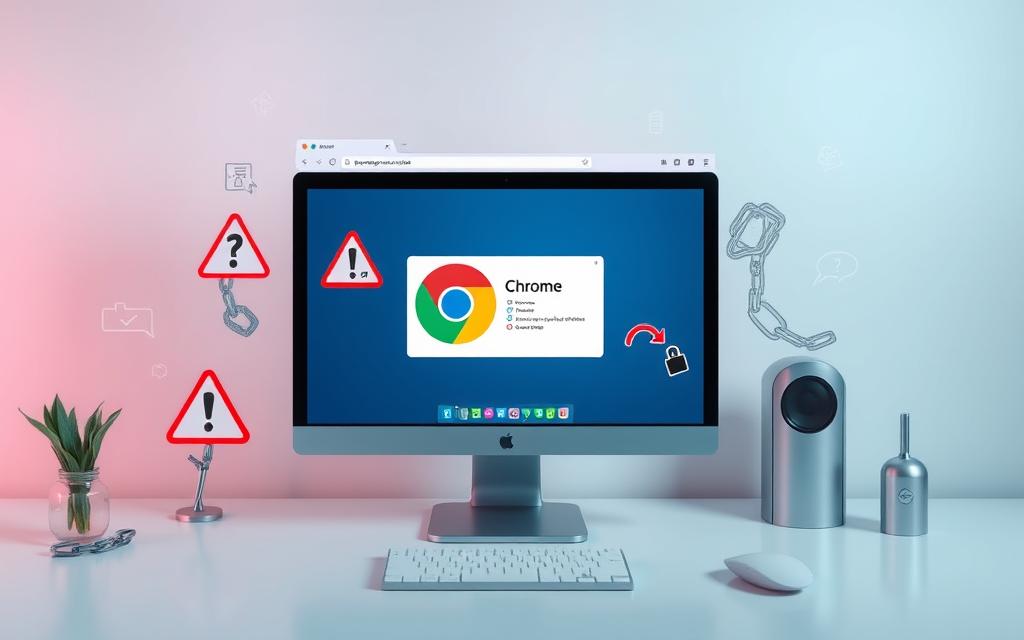How to Prevent Malware on Your Computer
Is your device truly safe from cyber threats? Many believe their systems are secure, but the reality is that no device is completely immune. Malware can infiltrate even the most advanced setups, causing significant damage.
We’re here to guide you through essential steps to safeguard your computer. From understanding what malware is to implementing robust security measures, this article covers it all. Staying proactive is key to protecting your system from potential threats.
Regular updates and reliable software are your first line of defense. We’ll explore how these tools work and why they’re crucial for maintaining a secure environment. Let’s dive into the best practices to keep your device safe and your data protected.
Understanding Malware Threats
Malware remains one of the most persistent and damaging threats to digital security. It can infiltrate systems, steal sensitive information, and cause significant harm. To protect our devices, we need to understand what malware is and how it operates.
What is Malware?
Malware, short for malicious software, is designed to harm or exploit devices, networks, or users. It includes various types of harmful programs, such as viruses, spyware, and ransomware. These programs can disrupt operations, steal data, or even lock users out of their systems.
Types of Malware and Their Risks
Malware comes in many forms, each with unique risks. Viruses attach themselves to clean files and spread across systems. Spyware secretly monitors user activity, collecting sensitive information. Ransomware locks users out of their devices until a ransom is paid.
Other types include adware, which floods devices with unwanted ads, and Trojans, which disguise themselves as legitimate software. Understanding these threats helps us take proactive steps to safeguard our systems.
Malware often spreads through phishing emails, malicious downloads, or infected websites. Once inside a system, it can cause data breaches, financial losses, and operational downtime. Staying informed about these risks is crucial for effective protection.
How to Prevent Malware on Your Computer
Proactive measures can significantly reduce the risk of malware infections. Staying ahead of cyber threats requires a combination of regular updates and reliable software. Let’s explore the steps you can take to safeguard your system effectively.
Importance of Regular Security Updates
Regular updates are a critical part of maintaining system security. They patch vulnerabilities that malware often exploits. Without these updates, your device becomes an easy target for cyberattacks.
Operating systems and software frequently release updates to address newly discovered threats. Ignoring these updates leaves your system exposed. Staying current ensures your defenses are always up to date.

Essential Software and Protection Tools
Using the right tools is just as important as keeping them updated. Antivirus programs and firewalls are essential for blocking malware. These tools actively scan for threats and prevent infections before they occur.
- Antivirus Software: Scans files and programs for malicious activity.
- Firewalls: Monitors incoming and outgoing traffic to block unauthorized access.
- Email Scanners: Detects malware in attachments and links.
Combining these tools creates a layered defense against malware. Routine maintenance, such as scanning and updating, ensures your system remains secure.
Implementing Effective Security Measures
Enhancing your device’s security requires more than just basic precautions. A layered approach ensures maximum protection against cyber threats. By combining the right tools and configurations, we can significantly reduce the risk of malware infiltration.
Using Antivirus and Firewall Solutions
Antivirus software is a cornerstone of digital security. It scans files and programs for malicious activity, preventing infections before they occur. Regularly updating your antivirus ensures it can detect the latest threats.
Firewalls act as a barrier between your device and the internet. They monitor incoming and outgoing traffic, blocking unauthorized access. Together, antivirus and firewall solutions create a robust defense against malware.
Configuring Secure System Settings
Secure system settings are just as important as software tools. Start by enabling automatic updates for your operating system. These updates patch vulnerabilities that malware often exploits.
Adjusting privacy settings can also reduce risks. Limit app permissions and disable unnecessary features. These small changes can make a big difference in keeping your device safe.
Finally, consider enabling encryption for sensitive data. This adds an extra layer of protection, ensuring your information remains secure even if malware breaches your system.
Detecting Malware Infections Early
Spotting malware early can save your system from severe damage. Recognizing the signs of an infection is the first step toward minimizing its impact. By staying vigilant, we can prevent further compromise and protect our data.
Common Indicators of Malware Activity
Malware often leaves behind noticeable signs. Unusual error messages or pop-up windows are common indicators. These alerts may appear unexpectedly, signaling underlying issues.
Another red flag is altered system behavior. If your device slows down or redirects you via suspicious links, it could be infected. Modified attachments or unrecognized messages are also warning signs.
- Error Messages: Frequent or unusual alerts may indicate malware.
- Pop-Up Windows: Unexpected ads or warnings can signal an infection.
- System Slowdown: Sluggish performance often points to malware activity.
- Redirected Links: Being sent to unfamiliar sites is a common symptom.
Early detection is key to preventing serious damage. By monitoring these changes, we can act quickly to remove threats and restore system security.
Removing Malware and Restoring Your Device
Restoring your device after a malware attack requires a systematic approach. Acting quickly and following a clear process can minimize damage and ensure a full recovery. We’ll guide you through the essential steps to eliminate threats and restore your system’s security.
Step-by-Step Malware Removal Process
Start by disconnecting your device from the internet. This prevents the malware from spreading or communicating with external servers. Next, download reputable malware removal tools. These programs are designed to detect and eliminate harmful software effectively.
Run a comprehensive scan using the downloaded program. This will identify any infections and allow you to remove them. If the issue persists, seek support from trusted companies or technical experts. Their help can ensure a thorough fix and prevent future infections.
- Stop Login Activities: Immediately halt any login attempts to protect your accounts.
- Change Passwords: Update your credentials to secure compromised accounts.
- Restore from Backups: Use clean backups to reset your system to a safe state.
Finally, restore your device from a clean backup. This ensures all malware is removed and your system returns to its original state. By following these steps, you can effectively eliminate threats and safeguard your device.
Strengthening System Security Post-Infection
After removing malware, it’s crucial to fortify your system against future threats. This step ensures your device remains secure and minimizes the risk of recurring attacks. Let’s explore the essential measures to rebuild and enhance your system’s defenses.

Updating Passwords and Enabling Two-Factor Authentication
One of the first steps is updating your passwords. Use strong, unique combinations for each account. Avoid reusing old passwords, as they may already be compromised. This simple change significantly reduces the risk of unauthorized access.
Enabling two-factor authentication adds an extra layer of security. This method requires a second form of verification, such as a code sent to your phone. It ensures that even if your password is stolen, your accounts remain protected.
| Step | Action | Benefit |
|---|---|---|
| 1 | Update all passwords | Prevents unauthorized access |
| 2 | Enable two-factor authentication | Adds an extra layer of security |
| 3 | Monitor account activity | Detects suspicious behavior early |
These measures not only secure your accounts but also protect your identity from theft. Regularly reviewing your security settings ensures your system stays resilient against future malware attacks. Continuous vigilance is key to maintaining long-term protection.
Conclusion
Protecting your system from malware requires consistent effort and awareness. By maintaining updated security software, practicing safe browsing habits, and configuring robust system settings, we can significantly reduce risks. Tools like antivirus programs and firewalls, combined with authentication measures, create a strong defense against threats.
Continuous monitoring of your device for unusual activity is essential. Follow best practices when using email, websites, and the internet to minimize vulnerabilities. Staying informed about the latest malware trends ensures ongoing protection and cyber resilience.
Implementing these strategies not only safeguards your data but also enhances your system’s overall security. Let’s stay proactive and vigilant to keep our devices safe from evolving threats.




